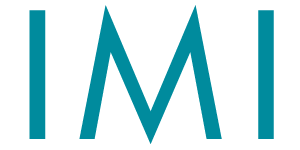How to find out if you’re low on Vitamin D (spoiler alert: most people are) and how to achieve the optimal level, naturally.
Vitamin D sufficiency – and daily dosing to achieve adequacy – is proven by research to boost your immunity1. This powerful nutrient helps stimulate production of secretory IgA, an antibody that acts as our immune system’s first line of defence.
But, how do you know if you have the appropriate levels of Vitamin D?
The chances are that you don’t.
Vitamin D3 is produced when sunlight hits your exposed, sunscreen-free skin. As most Hong Kongers attend work or school during the day, or are indoors between 11-3pm, Vitamin D imbalance is a proven challenge. Research shows 72% of Hong Kong residents aged 18-26 years have insufficient levels of Vitamin D.
Blood levels above 30ng/mL are considered the optimal level (depending on multiple factors). Young adults had an average level of 13ng/mLii – a sub-optimal level that adversely affects immune function.
In fact, Vitamin D insufficiency is a worldwide epidemic, according to a consensus statement from the 13th Workshop on Vitamin D.
Lots of hours during the day spent indoors, slathering sunscreen on your skin when you do go out, and nutrient-poor foods can leave you with insufficient Vitamin D3 all year round. If you happen to be a sun lover, it is possible to achieve sufficient levels of Vitamin D3 to see you through the winter (you’ll need a blood level of over 60 ng/mL at the end of the sunny months) however, very few achieve this.
In the coming winter months – when you need approximately 45 minutes of exposure to the sun on the arms, legs, face, and hands every second day to achieve optimal levels of Vitamin D3 – getting enough sunlight becomes even more challenging, leaving your immune system susceptible.
At IMI, our clinical observations concur with the plethora of studies on Vitamin D-imbalance. Low vitamin D3 levels are found in those who struggle with low immunity. In initial blood tests, most of our clients with poor immunity had sub-optimal levels of Vitamin D3.
How to increase your Vitamin D3
Ideally, you would have more time with your skin exposed to the sun, but this isn’t always achievable.
Some foods are good sources of Vitamin D3, too. Fatty fish like salmon, tuna and mackerel, and pharmaceutical-grade cod liver oil, for example, are excellent sources of Vitamin D3. Small amounts of vitamin D are also present in beef liver, cheese, and egg yolks.
Selected Food Sources of Vitamin D

* IUs = International Units. Daily intake of approximately 1,000IU are needed for sufficient blood levels, but even this amount will not raise the low blood levels commonly found.
But – unless you consume an unusual amount of oily fish products – diet alone cannot provide the levels of Vitamin D your body needs for optimal health. Adults require daily supplementation of 2,000 – 5,000IU (the higher end if you’re overweight) for some months to effectively increase the blood level above 30ng/mL, which is when immune function is typically restored.
At IMI, our goal is to help you to achieve healthy blood levels of 30-50ng/mL so that your immune system can function at its best.
How to find out if you’re Vitamin D deficient
Particularly amid the COVID-19 pandemic, it is important to ensure you have an optimal level of Vitamin D. To confirm your Vitamin D3 levels, we recommend a blood test. If you have low levels, our naturopaths will recommend appropriate supplementation to ensure you achieve the appropriate level of support.
It is best to test, not guess. While an insufficient level of Vitamin D3 can undermine your immunity, too much of this vital nutrient can cause side effects like nausea, vomiting, stomach pain and irregular bowel movements.
Alternatively, to arrange an in-person, phone or video appointment with one of our naturopaths, please call +852 2523 7121 or contact us here.
i Bergman, Peter et al. “Vitamin D and Respiratory Tract Infections: A Systematic Review and Meta-Analysis of Randomized Controlled Trials.” PloS one vol. 8,6 e65835. 19 Jun. 2013, doi:10.1371/journal.pone.0065835
ii (Wang EW, Pang MY, Siu PM, et al. Vitamin D status and cardiometabolic risk factors in young adults in Hong Kong: associations and implications. Asia Pac J Clin Nutr. 2018;27(1):231-237. doi:10.6133/apjcn.022017.08)
iii Biesalski HK. Vitamin D deficiency and co-morbidities in COVID-19 patients – A fatal relationship?. Nfs Journal. 2020;20:10-21. doi:10.1016/j.nfs.2020.06.001.
您缺乏維生素D嗎?
如何確定身體是否缺乏維生素 D, 以及如何自然地達到最佳水平。
維生素D被公認為免疫力增強劑。研究報告證實,充足的維生素D可以減少所有類型的呼吸道感染(1)。但是,怎樣知道您是否有充足的維生素 D?
維生素D3是在皮膚沒有塗任何防曬霜,陽光照射到的情況下產生的。由於大多數香港人白天在上班和上學,或長時間處於室內,所以很大機會缺乏維生素D。研究指出, 18-26歲的香港人有72%缺乏維生素D。血液中維生素D超過30ng/mL被認為是最佳水平;年輕人的平均水平為13ng/mL(2)。缺乏維生素D對免疫功能和合併症風險都有不良影響。
根據第13屆維生素D研討會指出,缺乏維生素D是一種世界性的情況。研究表示,老年人最缺乏維生素D3,而他們往往亦會出現嚴重的COVID-19症狀,從而推斷兩者是有聯繫的(3)。
長時間處於室內,使用防曬霜和營養不良的食物都會使我們長期缺乏維生素 D3。冬季來臨前(您的維生素D3血液水平需要超過 60 ng/mL),但是很少人能達到此水平。
在冬季,您需要隔天在陽光下照射約45分鐘,以達至最佳的維生素D3水平。受到疫情影響,要接觸到足夠的陽光變得更加困難。
在IMI,我們的臨床觀察與大量關於維生素D缺乏的研究相吻合。研究發現, 復發性呼吸道感染患者的維生素D3水平都較低。我們大多數客人在初次血液測試中,他們的維生素D3水平亦低於最佳水平。
如何增加體內維生素D3水平
最理想是增加皮膚暴露在陽光下的時間,或者從一些食物例如鮭魚、金槍魚和鯖魚等吸收維生素D3。優質的魚肝油更是極佳維生素D3的來源。牛肝、乳酪和蛋黃中也有少量的維生素D。
以下是部分含有維生素D的食物以供參考:
* IUs = 國際單位。要達到足夠的血液水平,每天需要攝取大約1,000IU維生素D3,但如果是缺乏維生素D, 這個攝取量並不足以提高血液水平。
除非食用大量油性魚類食品, 否則我們單靠飲食是不能提供身體所需的維生素D水平,以達至最佳的健康狀態。成人需要每天補充 2000-5000IU(如果肥胖人仕則需要補充更多),持續幾個月才能有效地將維生素D血液水平提高到30ng/mL以上,從而令免疫功能得到恢復。
在IMI,我們的目標是助您達到維生素D 30-50ng/mL的健康血液水平,不僅是為了預防COVID-19,更是為了防止大量病毒和其他情況出現。
如何知道是否缺乏維生素D?
確保身體有最佳的維生素D水平是很重要的。您可以進行血液測試去確認自己的維生素D3水平。如果缺乏,我們的自然療法師將會建議適當的補充,以確保身體達到足夠的水平。雖然維生素D3含量不足會破壞我們的免疫力,但若攝入過多便會導致噁心、嘔吐、胃痛和腸道不適等副作用。
要了解更多關於IMI純正有效的維生素D3補充劑以及成人和兒童的建議劑量,請點擊這裡。
如果需預約自然療法師當面、電話或視頻診症,請致電+852 2523 7121或在此聯繫我們。



